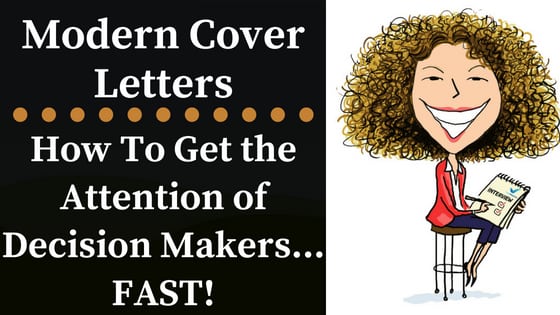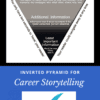
When you see a survey that says 55 percent of hiring managers don’t pay attention to cover letters, it may be tempting to think that you don’t need one. But consider that means that 4 out of 10 hiring managers do want to read one — and you don’t know whether the hiring manager for this job is one of the 55 percent, or one of the 45 percent. Unless you are sure otherwise, it’s better safe than sorry.
Even hiring managers and recruiters who say they never read cover letters may find themselves drawn in by a particularly compelling cover letter. When they say they don’t want a cover letter, it’s because they don’t want to read a boring, basic cover letter. Like a résumé, the cover letter will only get a quick glance at first. But if you can tell a story with your cover letter, you may interest them in reading it — either instead of, or in addition to, your résumé.
So how do you know when you need a cover letter, or not? The general guideline is that anytime you can’t hand your résumé directly to the hiring manager, you need a cover letter. It serves as a letter of introduction, allows you to share information that wouldn’t otherwise be on a résumé (for example, the reason why you made a job change in the past — or why you’re seeking one now), and communicates your qualifications and interest in this specific job.
An effective cover letter can make a match between what you have to offer and what the hiring company needs — even spelling out the specific ways you can meet the position’s requirements in written form. The cover letter is also an opportunity to let your personality shine through. You can set yourself apart from other candidates — and maybe even shore up some weaknesses that might otherwise keep you from getting an interview — with a targeted, well-written cover letter.
The cover letter can also impact the ability of your résumé to be found if you’re applying to a company through applicant tracking system software. Many online applications offer the candidate the opportunity to upload a cover letter, and this becomes part of the candidate’s full profile in the ATS database. A strong cover letter can enhance your ATS profile, making it more likely that your résumé will make it out of the database and get read by a hiring manager.
You can have a “template” cover letter, but it’s important to take the time to customise the cover letter before sending it off. The first thing you should do is research the company. Take a look at their website and LinkedIn company page. Google them. Look on research websites like Glassdoor and Vault. Get to know their needs and the specific role the position you’re applying for plays in the greater scheme of things. This will help you ensure that your cover letter is attention-getting and relevant for the reader. (This research will also help you prepare for the job interview — which, of course, is the purpose of the résumé and cover letter.)
Formatting Your Cover Letter
When you’re formatting a traditional cover letter, make sure you’re matching the style and format of your résumé. Use the same fonts and layout, for example. Beyond the “look” of the document, there are several different ways you can structure the cover letter.
The first is a traditional “business letter” format, using paragraphs. This is the most common style; however, you want to make sure you keep the paragraphs short (no more than three or four sentences for each paragraph), because hiring managers will only give your cover letter a few seconds of attention during the initial screening process. (Although it will likely be read fully later if you are one of the few candidates selected for an interview.)
The second is what is commonly called the “T-Style” cover letter. This cover letter uses a two-column format to match up the job requirements with the candidate’s qualifications. It’s the fastest way to showcase how you’re a great fit for the position, and works best when you meet the position requirements almost exactly. The left-hand column can be titled “Job Requirements” or “Your Needs” (this information is pulled from the job posting) and the right-hand column is titled “My Qualifications” and demonstrates your fit for each item in the left-hand column with your skills, education, and experience.
The third format is an e-note — it’s known as the “modern cover letter.” The traditional three- to five-paragraph, maximum one-page cover letter has been replaced in some cases with a shorter document. This format — often referred to as an e-note — is a cover letter that accompanies a résumé sent via email.
When to Send an E-Note and Not a Cover Letter
When sending a résumé as an attachment, you should also write a message in the email accompanying the file. Hiring managers report receiving hundreds or thousands of email messages with “Résumé” as the subject line, with no message in the email body and a file attachment. This is an easy way to have your message deleted, as hiring managers are wary of opening documents that are disguised as résumés but may be infected with malware or viruses.
The e-note is the email message — not an attachment. It gives the email recipient the information they need to decide if they should read your résumé. Because e-notes are usually 1-2 paragraphs (or between 90-120 words), you won’t provide the depth of detail in an e-note that you would in a traditional cover letter. However, you should still spell out up to three relevant qualifications or top accomplishments. Don’t copy-and-paste them directly from your résumé — instead, rewrite them so you’re sharing the same information in a different way.
Another advantage of an e-note is the opportunity to provide live links to your social media profiles. The most common way to do this is in the signature block of your email — after your name, include your contact information (phone number, email), and then URL links to your LinkedIn account, blog or online portfolio, Twitter profile, etc.
When you’re sending an unsolicited email or LinkedIn message (that is, not replying to an email from a hiring manager or recruiter), you want your email opened! In the subject line, include the title of the position you’re seeking (re: Project Manager) or the name of the person who referred you (Tom Smith suggested I contact you) to increase the chances of your email being opened.
When you’re applying through applicant tracking system software online, you’ll likely be able to include (or attach) a traditional cover letter. However, if this isn’t an option, many systems include an “Additional Information” section, which could be used to include an e-note.
Four Things You Must Include In Your Cover Letter
Regardless of the format, the first thing in your cover letter should be an attention-getting opening paragraph! There are a couple of ways to get the reader’s attention.
Let the reader know how you found out about the job opening. (Were you referred by a current employee? Are you a customer, and saw it while shopping on the company website?) Include the reason why you’re interested in the position.
The second “must-have” in your cover letter is accomplishments! (Opening a cover letter with your accomplishments is also very attention-getting, so you may consider starting your cover letter with a strong accomplishment.) The reader wants to know: What have you done? How can you help me? Your previous achievements provide the proof that you can do what you say you can!
Don’t simply restate accomplishments from the résumé, however. Tell the story behind the numbers. Make sure that the accomplishments you’re showcasing align with the requirements of the position you’re pursuing. For example, if you’re applying for a sales position, provide accomplishment data that shows how you’ve grown sales revenue, or expanded the customer base. However, if the sales role doesn’t include any supervisory responsibilities, don’t talk about how you’ve trained and supervised two customer service associates.
Next, the cover letter must include anything specifically requested in the job posting — for example, salary history or salary desired (although you may want to consider how you answer this question, you should address it in the cover letter). However, do not include salary information unless you are specifically asked for it! Sometimes the hiring manager will also ask for specific information to be included — for example, schedule availability. Make sure you include this in your cover letter, or your application will likely be discarded. (The ability to follow directions is something that is easy to discern by asking the candidate to include specific information in the cover letter.)
Finally, end with a strong closing statement. The best closing statement is a call to action — either inviting the prospective employer to contact you, or — even better! — letting him or her know that you will be contacting them to follow-up. Include your preferred contact method (the easier it is for the hiring manager to reach you, the easier it will be to schedule your interview!) and your availability.
You may also want to address why you’re looking for a new position — but keep it professional. Over-sharing personal details of your life isn’t the way to progress to a face-to-face interview. But many hiring managers do wonder — if you’re so good at your job, why are you leaving it? Make sure you are framing the reason in a positive way, however. Don’t bad-mouth your current employer or co-workers. If you state your reason is to “pursue new opportunities,” everyone can read between the lines! Instead, focus on how the new job can take advantage of your skills, education and experience — or don’t address this issue at all in the cover letter.
You can also include your willingness to travel or relocate, if desired by the company.
How to Customise a Cover Letter Template
Beyond the obvious — including the hiring manager’s contact information — you also want to make sure that you tailor the content of the cover letter specifically for the company being targeted. Hiring managers can tell when you’ve taken the time to research the company. Include details that demonstrate that you’ve done your homework. If you’re a customer of the company, mention that! If you know they’re expanding (and thus will be hiring for new positions), reference the article you read about it. Read the company’s website — and, if they’re a public company — the most recent annual report. Be familiar with what the company does. Make it apparent in the cover letter that you’re interested in working for them and the role that you can play in helping them.
One important tip: If you’re customising a cover letter template that includes the company name in the body of the cover letter, make sure you’re including the right company! Many hiring managers will immediately discard a cover letter that mentions the wrong company name.
Cover Letter Tips & Tricks
Don’t just repeat information from your résumé in your cover letter — give the reader a reason to read the cover letter. Focus on the reasons why you’re a fit for this specific position.
Address the cover letter to a specific person, not “To Whom It May Concern.” Ten or 15 years ago it was very difficult to find a hiring manager’s name. Today, with Google, LinkedIn, and company websites, you should be able to secure the specific individual’s name and job title with a quick search (and maybe one follow-up phone call).
Make sure the cover letter is “employer-focused,” not “you-focused.” It’s not about what you want — it’s about how you can add value to the prospective employer.
Show — don’t tell! Just like on the résumé, don’t use clichés to describe yourself and your work — let your accomplishments do the talking. Instead of saying “results-oriented,” showcase the results you’ve achieved! Use specific dollar amounts, percentages, and other numbers to quantify your accomplishments.
The cover letter is an opportunity to bring attention to older experience on your résumé that is relevant for the job you’re seeking, but that may not be easily found.
You can also use the cover letter to highlight work experience that would substitute for education requested in a job posting — or highlight training and classes that have prepared you for the work being done.
Don’t include your photo on your cover letter. It doesn’t belong on your résumé either. But you absolutely need a great photo on your LinkedIn profile!
Stand out! Don’t just apply online for a position. Your cover letter and résumé may never make it out of the ATS software. If you apply online, follow-up with a hard copy of the résumé and cover letter — either mailed or dropped off to the company — or email an e-note and résumé to the hiring manager.
Cover Letter Checklist
When writing/customising the cover letter:
- Make sure the cover letter uses the same style/font/format of the résumé. The résumé and cover letter should “match” each other. And the content should complement each other, but not be an exact duplicate.
- Address the hiring manager by name specifically, not just “To Whom It May Concern.” If you’ve exhausted ALL options you can use Dear Hiring Team as a last resort!
- The first paragraph needs to be attention-getting! If it’s not, rewrite it!
- Focus on what sets you apart from other candidates! Make the case for yourself in your cover letter — many hiring managers read the cover letter first before deciding whether or not to look at the résumé. This is especially true for e-notes.
- Use pronouns. Unlike the résumé, you can include pronouns in your cover letter — “I, me, my” — however, remember, that you want to focus on what the employer is looking for, not what you want.
- Include a “call to action” in the closing paragraph — what is the next step? Will you follow-up with the hiring manager or recruiter, or do you invite them to call you? How should they contact you? (For example, direct them to your cell phone number, if that’s how you want to be reached.)
Before sending the cover letter:
- Double-check that you’ve spelled the contact person’s name and the company name correctly.
- Have someone else proofread the cover letter to make sure there are no typos and no mistakes. Watch especially for words that spellcheck won’t catch. (For example: the wrong word spelled correctly — like “pubic relations” instead of “public relations.”)
- If using the cover letter and résumé to apply online, make sure you’ve stripped out any formatting that may get lost in the ATS software, or that may corrupt the content of the document as it’s being uploaded into the ATS database. (You can always follow-up to the online application by sending a copy of the résumé and cover letter — with formatting — via email to the hiring manager directly, or by snail mail.)
Need help with leveraging your job search? We can help! Contact Carolyn from Total Resumes today at carolyn@totalresumes.com.au

